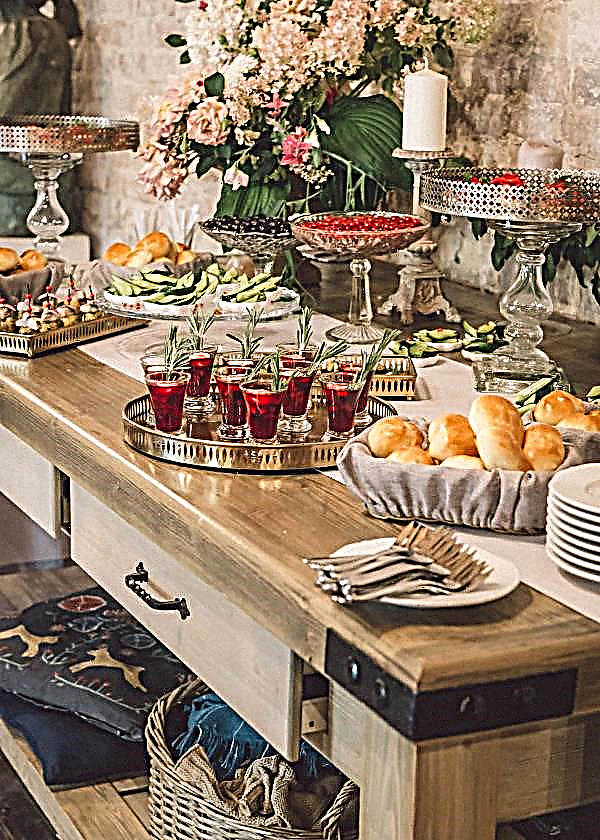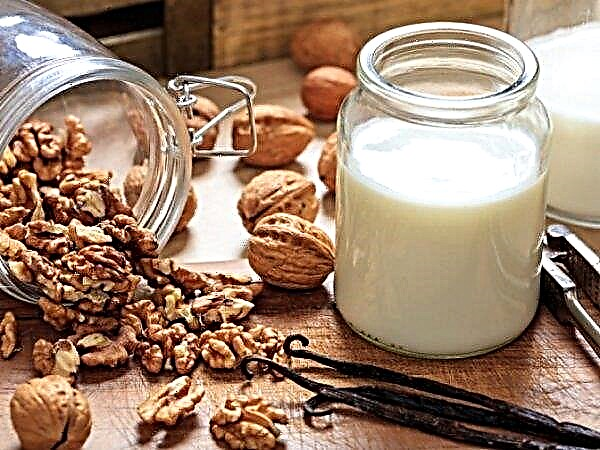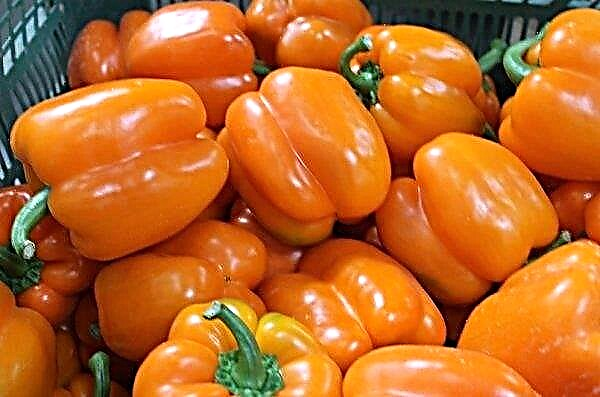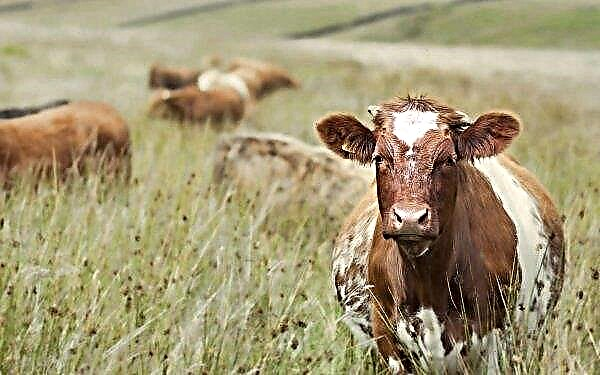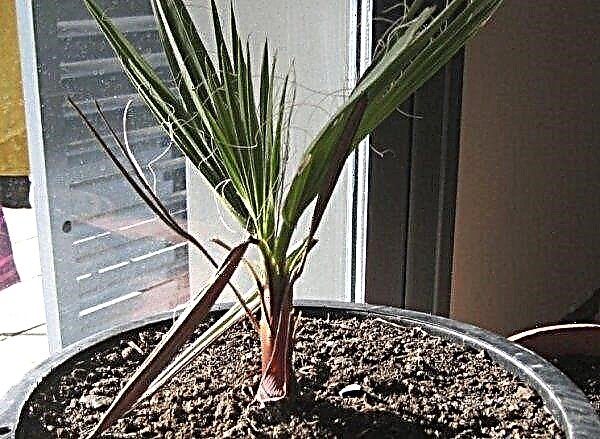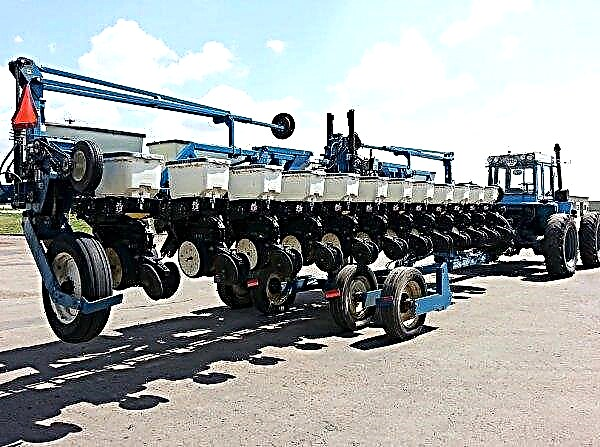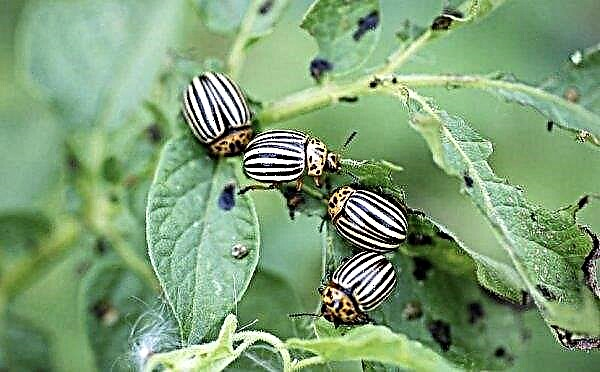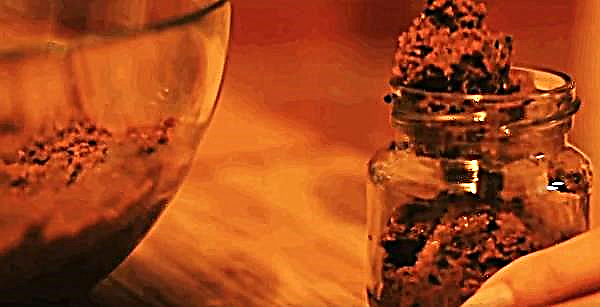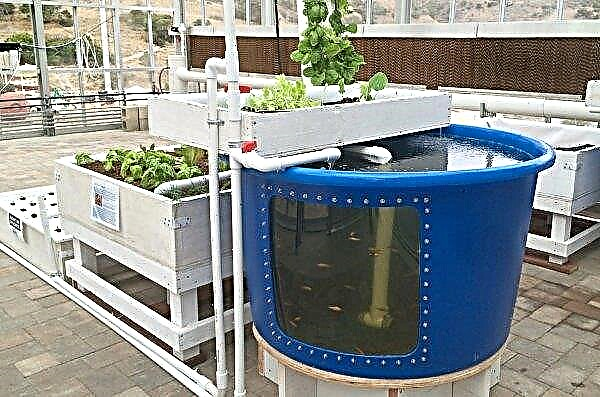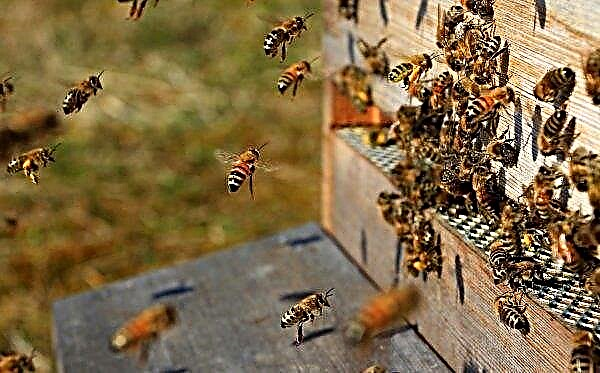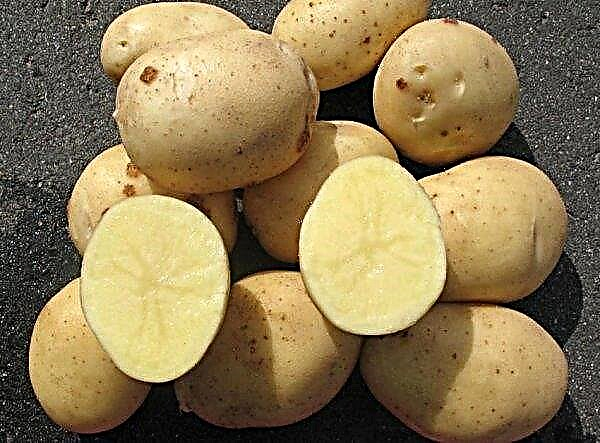Dried peas are always on sale and are inexpensive. But few people know that such a product can be prepared for future use independently, especially if a large crop of legumes has ripened in the garden. Home-dried peas differs from store peas in that it does not contain preservatives or extraneous additives, which means it is healthier and safer for our health. The secrets of harvesting dried peas for the winter are outlined in this review.
Pea drying
There are two main methods for drying legumes: without special heating and with one.
The first method takes longer, but does not require electricity or gas. The disadvantage is that its implementation requires the availability of free space, moreover, well-ventilated and illuminated, otherwise the product will not dry, but rot.
Did you know? In 1971, boys from the English village of Witcham (Cambridgeshire) organized a pea-shooting tournament against targets. The locals liked the idea so much that they began to hold competitions annually, and today the championship has gained international proportions, gathering enthusiasts from the UK, Holland, Spain, the USA and New Zealand.
Since such conditions may not be created in every farm, we dwell in more detail on the second, accelerated drying method. It is better to use a special electric dryer for this, but you can use a conventional oven.
In the oven
Before starting to dry, green peas should be boiled.
Step-by-step instructions for drying green peas in the oven:
- Prepare the raw materials. Peas for drying is better to take shelling. Brain and sugar varieties are usually consumed fresh, since all their dried advantages are completely lost. It is also advisable to harvest before the fruit finally hardens and overflows with starch. It is ideal to remove the pods 2-3 weeks after the plant has flowered, and you need to process the seeds immediately after harvesting, otherwise they will lose the bulk of their beneficial properties.
- Extracted from the Pods and peeled peas rinse under running water.
- Pour into boiling water and boil for two minutes after boiling again.
- Drain the water by pouring the raw materials into a colander, and pour into a previously prepared container with cold water (you can add a few ice cubes to the water). This procedure is necessary so that the fruits retain their original bright green color.
- Dip peas in boiling water again, this time it is enough to boil it only a minute.
- Drain the water (it should remain transparent).
- Fill the fruit in a single layer on a paper towel or other water-intensive material and leave for a while until completely dry.
- Cover the baking sheet with parchment paper. Spread the peas on paper, trying not to allow the fruit to be arranged in several layers.
- Put the baking sheet in the oven, preheated to + 45 ... + 50 ° С (it is better to use the top shelf of the oven so that the fruits do not dry out and do not burn).
- Close the oven door, leaving a small gap for air circulation.
- After an hour, remove the pan from the oven and let cool at room temperature for 60–90 minutes.
- Walk the rolling pin on the surface of the fruit to get rid of the air chambersformed inside the pea in the process of extreme drying and preventing the "conservation" of useful substances. For the same purpose, you can use oppression.
- Repeat the drying process in the oven, increasing the temperature by 15–20 degrees.
- After an hour, the peas should acquire a solid texture and lose their gloss. However, properly dried peas should not resemble stones to the touch; rather, it acquires a velvety surface. Another sign of readiness is the presence of wrinkles around the entire circumference of the fruit.
- If, when pressed against a pea, it loses its shape, drying is not finished. However, in order to prevent evaporation of all moisture from peas (and such a product can be considered spoiled), it is better to leave the beans to dry at room temperature and only then pack them in storage containers.

In the electric dryer
With an electric dryer, the product procurement procedure looks simpler:
- Install special grids on the trays of the electric dryerso that the small peas do not fall in during drying.
- Prepare the peas. The rules for assembly, cleaning and pre-washing are standard and do not depend on whether an oven or an electric dryer is used in the future. The same goes for blanching, although some housewives skip this step and send the product raw to the electric dryer.
- Put the peas in trays strictly in one layer. Regardless of how many trays will be occupied by raw materials, everything needs to be installed in the dryer, this is important for proper air circulation during the drying process (in order not to “drive” the unit idle, you can put other products suitable for drying - vegetables, fruits or greens, for example, fresh dill).
- Set the temperature to +60 ° C and leave the peas to dry for 7-8 hours (you can make a download in the evening and leave the electric dryer to work until the morning).
- After a while, the product is ready. It remains to pour it on a flat surface and cool.
How to dry peas in an electric dryer: video
Storage rules
Many store dry peas in a cellar or refrigerator, while others prefer to store them in containers at room temperature. You can use both of these methods, the only question is how high quality the raw materials were, and how precisely the drying technology was followed.
Important! Properly dried peas can be stored for several years at room temperature (not higher than +25 ° C). If the fruits are moldy, this means that the workpiece was of poor quality.
To ensure the safety of the product, you should be guided by the following rules:
- Packing can be done only after complete cooling, warm fruits will begin to fog up and release moisture, which will subsequently lead to the development of mold;
- dry peas should be stored in a tightly closed container, preferably glass, but plastic food containers are also suitable;
- for storage, you need to choose a place protected from light and absolutely dry;
- to protect the product from moisture, it is recommended to lay small cloth bags filled with sodium chloride before packaging on the bottom of the container.
What can I cook?
The first dish that comes to mind at the mention of peas is soup.
There are many recipes for pea soup, for example:
- on different types of meat (chicken, beef, lamb, pork) or lean;
- with smoked meats (pork ribs, bacon, sausage, chicken and even fish);
- with celery;
- with chickpeas;
- with meatballs;
- with mushrooms;
- with stew;
- with dumplings;
- with sour cabbage (a variety of cabbage soup).
 Also, legumes can be used to make porridge or mashed potatoes and use as a side dish or independent dishes, especially if they are flavored with bacon, fried bacon, smoked meats or wild mushrooms.
Also, legumes can be used to make porridge or mashed potatoes and use as a side dish or independent dishes, especially if they are flavored with bacon, fried bacon, smoked meats or wild mushrooms.In addition, peas in the form of porridge or mashed potatoes are used as a filling for pies and other types of baking. You can also make casseroles from it.
Dried peas occupy a special place in the menu of vegetarians, because he is one of the few plant foods rich in protein. Substitutes for meat dishes are prepared from it - meatballs, meatballs, "sausages."
In the cuisines of the world there are original dishes from peas, some of which have become famous and loved outside the same ethnic group. Perhaps the most famous of these dishes is hummus.
Did you know? In 1975-1990, many refugees from Lebanon moved to the United States, where a civil war was taking place at that time. Obviously, migrants instilled in the indigenous population a love of hummus. According to surveys, one in five Americans eats this dish all the time.
Fans of Indian cuisine are surely familiar with such a dish as dosas. These are spicy pancakes from rice and legumes, fried in oil. The recipe for their preparation also contains dried peas.
To summarize. Home-made dried peas are an easy-to-produce harvesting that can enrich and diversify the winter diet. Preparing and using such a product is more pleasant than its purchased counterpart, since it contains the main secret component, without which truly healthy food is impossible - a good mood and love for your loved ones.
Preparing and using such a product is more pleasant than its purchased counterpart, since it contains the main secret component, without which truly healthy food is impossible - a good mood and love for your loved ones.

